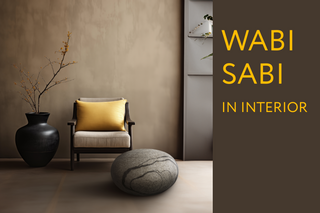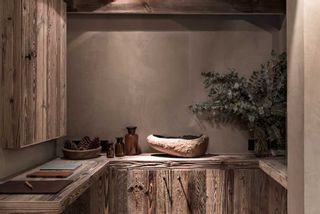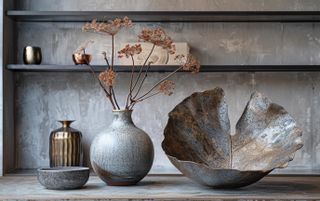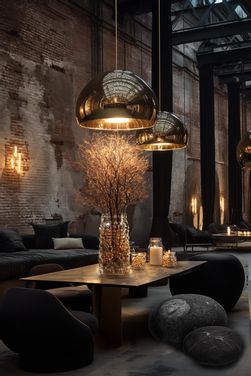WABI SABI BY KATSU








The philosophy of Wabi Sabi originated in Japan in the 15th century as a reaction in Eastern philosophy to the trend at that time of luxury and the use of rich decorations in interiors.
Japanese aesthetics is a combination of ideas about beauty in Japanese art that include wabi (the beauty of unpretentious simplicity, naturalness, roughness, asymmetry, and incompleteness), sabi (the beauty of the patina of age, elegant simplicity, and peaceful solitude) along with wabi sabi (the beauty of imperfection, impermanence, unfinishedness, understatement, and incompleteness), yugen (the beauty of the mysterious, mystical, hidden), and kawaii (the beauty of the cute, lovely, charming, small, innocent, childlike, and splendid). The principles of wabi and sabi related to a thoughtful approach to everyday life. Over time, their meanings partially overlapped and merged in such a way that they were combined into wabi-sabi, an aesthetic defined as the imperfect, impermanent, and incomplete beauty of things, which implies roughness, asymmetry, simplicity, and eco-friendliness with a patina of natural age. Natural lines highlight the uniqueness of each space, making texture and irregularities a style asset. Yet, how can you decorate your home in the Wabi Sabi style? First of all, look at simple, authentic things that have been used in our daily lives since the time of our grandmothers. Flea markets, garage sales, or bulletin boards can be great sources of ideas and inspiration for you. PRACTICALITY IN EVERYTHING Give preference to functionality and practicality when choosing furniture and decor. Invest in items that serve multiple purposes and use space as efficiently as possible without sacrificing style. MINIMALISM AND OPEN SPACE Try to hide visual clutter in cabinets, such as jars, small statues, food packaging, or cosmetics, leaving the room free of unnecessary details, as the Japanese build their interiors on the principle of "better nothing at all than a little too much". UTILIZE CONTRASTS Bring together materials that complement each other, highlighting the style in the interior. Glass and concrete, metal and ceramics, rattan and wool combined can create a cohesive visual composition of space, without straying from Japanese aesthetics. SET ACCENTS These can be abstract canvases without frames, designer panels with lighting, or large, heavy vases filled with dried flowers and tree branches. For example, using woven baskets of jute or rattan on a felted wool rug, along with noble textiles that have aged over time. THINK THROUGH THE LIGHTING Lighting is soft, diffused, muted light from northern or northeastern windows. Lighting plays a significant role in the design of wabi-sabi style. It has long been believed that a Japanese home is illuminated not by sunlight, but by moonlight. Therefore, it is important to choose lighting that will emphasize the textures of the room with its dim light and maintain the expressiveness of the natural colors of interior objects. MATERIALS USED IN SPACE DECORATION In the interior, texture is characterized not only by naturalness but also by aesthetic roughness. Visually rough, untreated surfaces should be emphasized. The main focus is on handmade items that gain value over time, like fine wine. Each pouf or ottoman created by our brand is unique and looks incredibly authentic because we pay attention to detail. The texture of wool, meticulously patterned veins, handmade craftsmanship, and high quality standards are the distinguishing features of KATSU STONES' soft furniture. The beauty of natural materials with their unique textures and irregularities is our inspiration and embodiment of Japanese aesthetics in your home. COLOR PALETTE OF THE STYLE The basis is neutral, natural shades of granite rocks and sandy dunes. Warm, pleasing beige or gray tones. All the colors of the earth and sky that we love to combine in our collections. By its nature, aesthetics have a broader significance in Japan than is usually given in aesthetics in the West. If Western civilization perceives aesthetics as philosophy (in its theoretical dimension), then the concept of aesthetics in Japan is seen as an integral part of everyday life. Considering the meanings of the individual words "wabi" and "sabi," one can find feelings of solitude and desolation. In a Zen sense of the world, they are seen as positive signs, representing liberation from the material world and a "transcendent" departure beyond its limits to a simple life. One characteristic of such a style will be openness and spaciousness. The peculiarity of such a style is that all things in the room have some meaning for the owner; they are not just performers of their functional duties. Character and love of life – that's what characterizes wabi-sabi.







